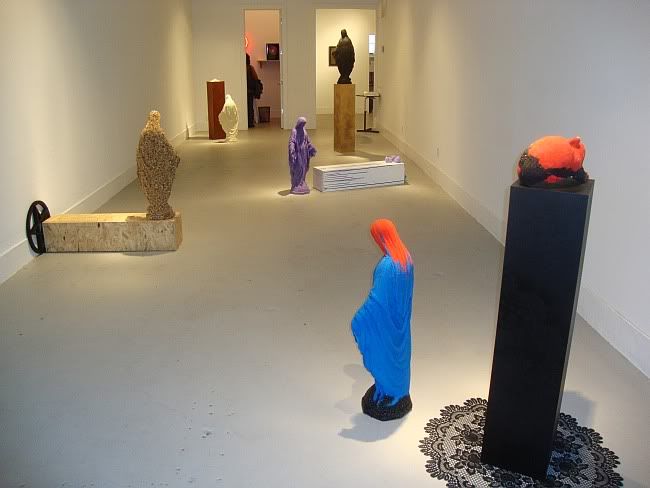
This Too Shall Pass installation view
Fernando Mastrangelo's exhibit This Too Shall Pass at PG Contemporary consists of five identical Virgin Mary statues and five rectangular pedestals, along with various other objects and substances. Each Virgin is associated with a particular substance. (I couldn't tell if the statues are made of the substance, or if they are mass-produced plaster statues coated with the substance.) Each pedestal is a different color. And each grouping includes some extra stuff or object.
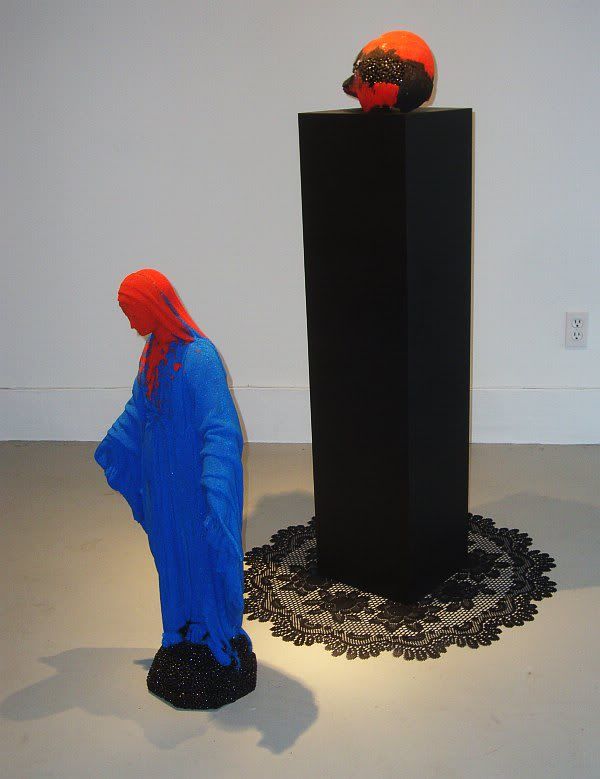
Fernando Mastrangelo, This Too Shall Pass (Sugar, Epoxy), mixed media, 32 x 15 x 7 inches (statue) and 42 x 10 x 10 inches (pedestal)
The statue is coated with sugar and epoxy, and it appears that the sugar has been painted or dyed. The object on top of the pedestal is mysterious. The combination of colors (black, blue and red) is quite striking, and lace doily provides a strong visual contrast to the black pedestal, which has the portentous presence of the monolith from 2001.
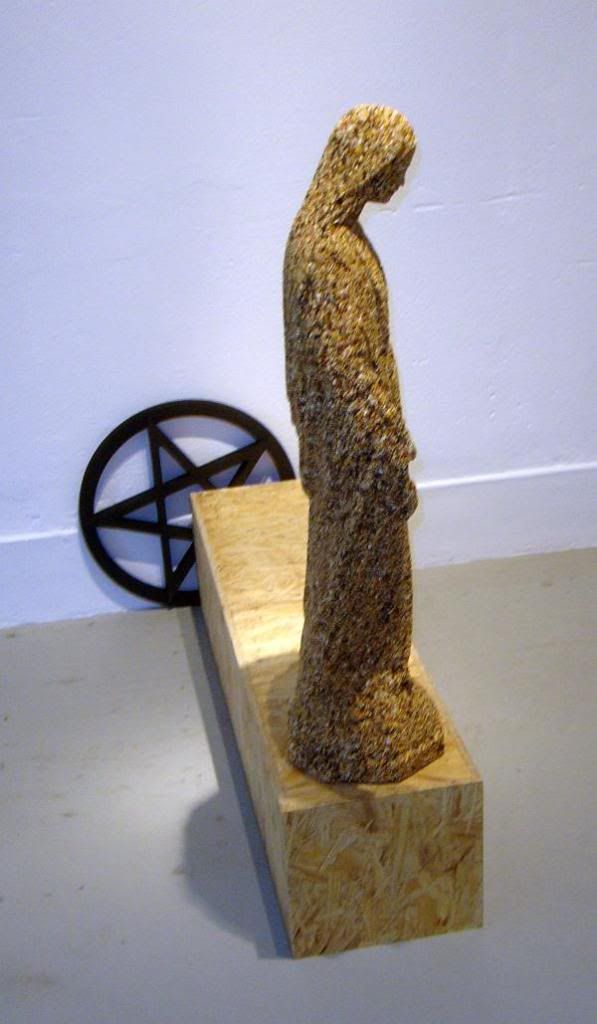
Fernando Mastrangelo, This Too Shall Pass (Bird Seed, Epoxy), mixed media, 32 x 15 x 7 inches (statue) and 42 x 10 x 10 inches (pedestal)
Mastrangelo takes his two repeated elements--the statue and the pedestal--and combines them differently for each piece. Above the statue is covered with bird seed and epoxy. Their is a wooden pentacle between the pedestal and the wall, partially obscured. I associate the pentacle with pop neo-paganism and Satanism, so perhaps we can see this piece as speaking of the opposition of Christianity and Catholocism in particular to Satanism and neo-paganism.
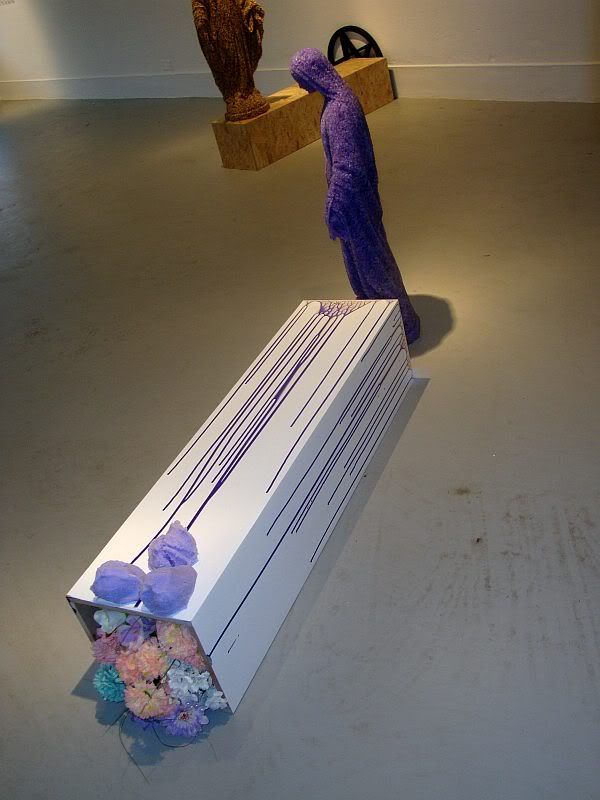
Fernando Mastrangelo, This Too Shall Pass (Salt, Epoxy), mixed media, 32 x 15 x 7 inches (statue) and 42 x 10 x 10 inches (pedestal)
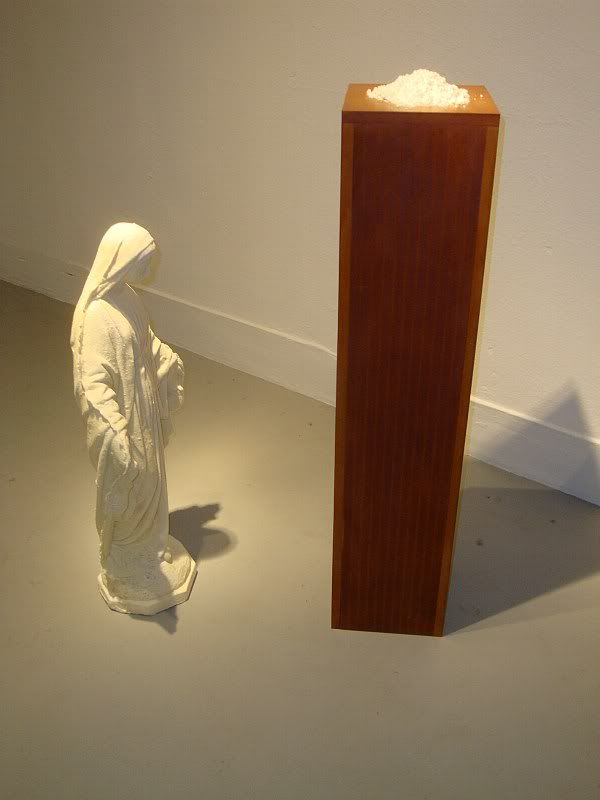
Fernando Mastrangelo, This Too Shall Pass (Salt, Goat's Milk), mixed media, 32 x 15 x 7 inches (statue) and 42 x 10 x 10 inches (pedestal)

Fernando Mastrangelo, This Too Shall Pass (Salt, Goat's Milk), mixed media, 32 x 15 x 7 inches (statue) and 42 x 10 x 10 inches (pedestal)
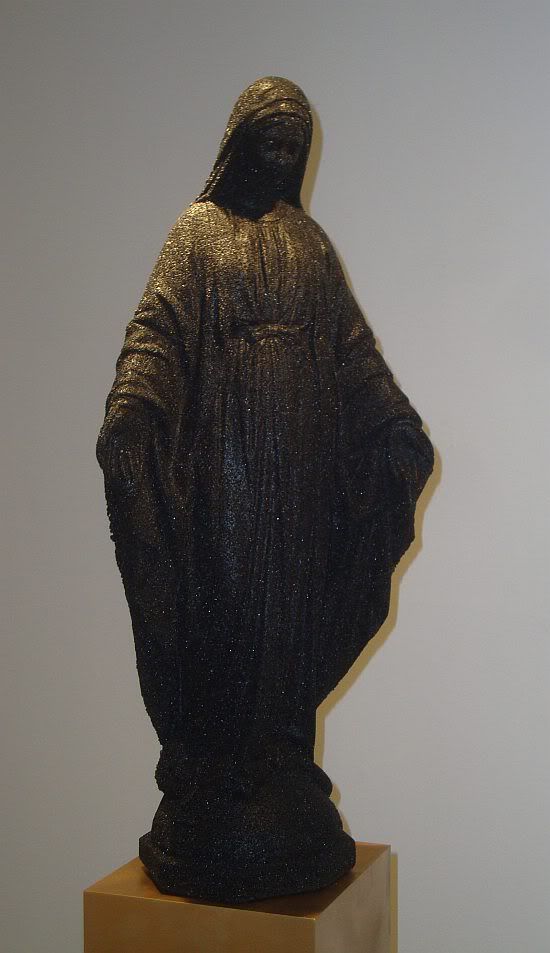
Fernando Mastrangelo, This Too Shall Pass (Salt, Gunpowder), mixed media, 32 x 15 x 7 inches (statue) and 42 x 10 x 10 inches (pedestal)
Mastrangelo has used various materials to create sculptural objects to critique things he opposes (for instance, an Aztec calendar made out of cornmeal to protest NAFTA). The problem is that it is not particularly obvious what he is protesting, unless it is explained to you. I have no idea what these sculptures mean. Does he have a beef with the Catholic Church? If so, what do salt, gunpowder, goat's milk, birdseed and sugar have to do with his complaint?
This is a collection of beautiful, mysterious objects. The materials are all highly resonant. When I think of sugar, I think of the Atlantic slave trade, for example. Sugar was a labor intensive crop that for plantations in the Caribeain and Brazil absolutely depended on slaves to produce and export to Europe. And I also think of my own sweet tooth and how it damages my health. Goat's milk makes me think of goat's milk cheese and delicious pizzas. Gunpowder makes me think of China, war, and fireworks. I could go on, but the point is that not only do the pieces look beautiful, they are like a drop of water falling into the lake that is a viewer's mind, setting off ripples. The problem for the artist is that ripples go in all directions, not necessarily in the direction he intends.
If Mastrangelo is making some kind of statement about the church, it is unclear (to me) what it is. But even so, I end up liking This Too Shall Pass quite a bit. In fact, I would like it less if it all just boiled down to "the Catholic Church is bad." That would be trivial. Political messages are narrow, while the uncontrolled ripples of meaning in this show are potentially infinite.




I first saw Fernando's work at the Armory Fair a couple years ago and I was taken with the way he creates a powerful discussion between the object and the raw material. This show is not only very beautiful with his masterful execettion of the different materials he uses - but opens up histories and cultural issues that are sometimes unspoken such as power and war; enforced slavery and opposing and hopeful issues as freedom and peace.
ReplyDeleteAlso, each piece is casted of the material and is an edition of 2 not mass produced, though that is part of the effect. ZPT
Great Article!